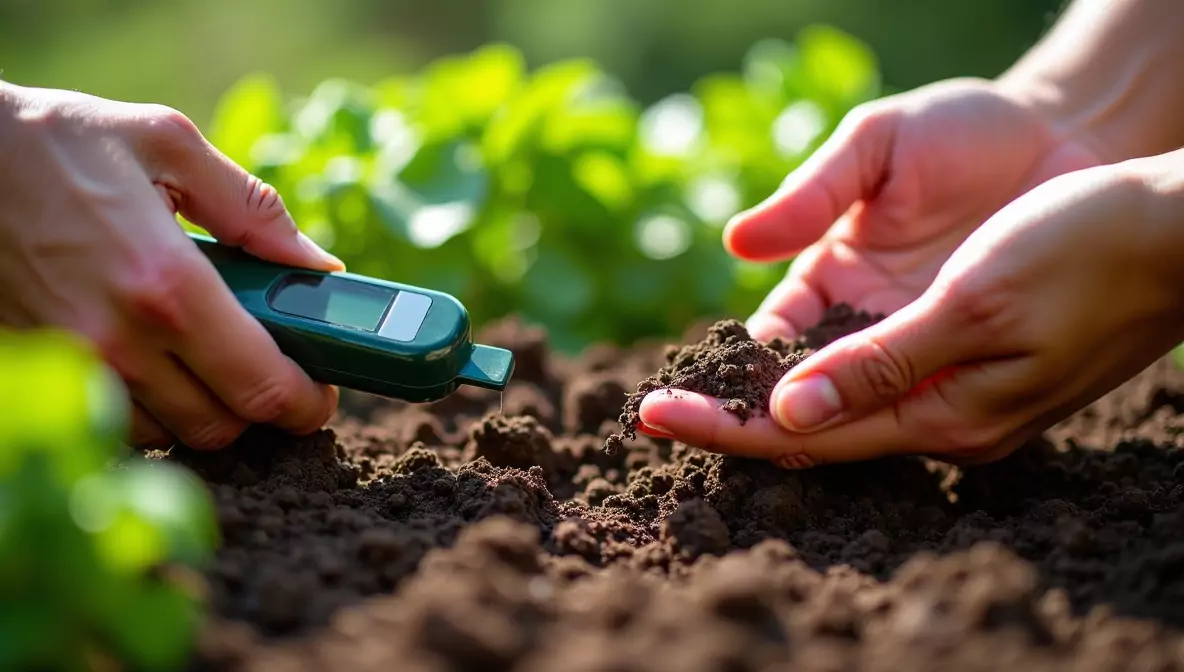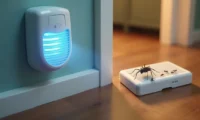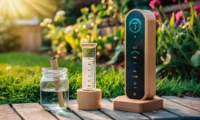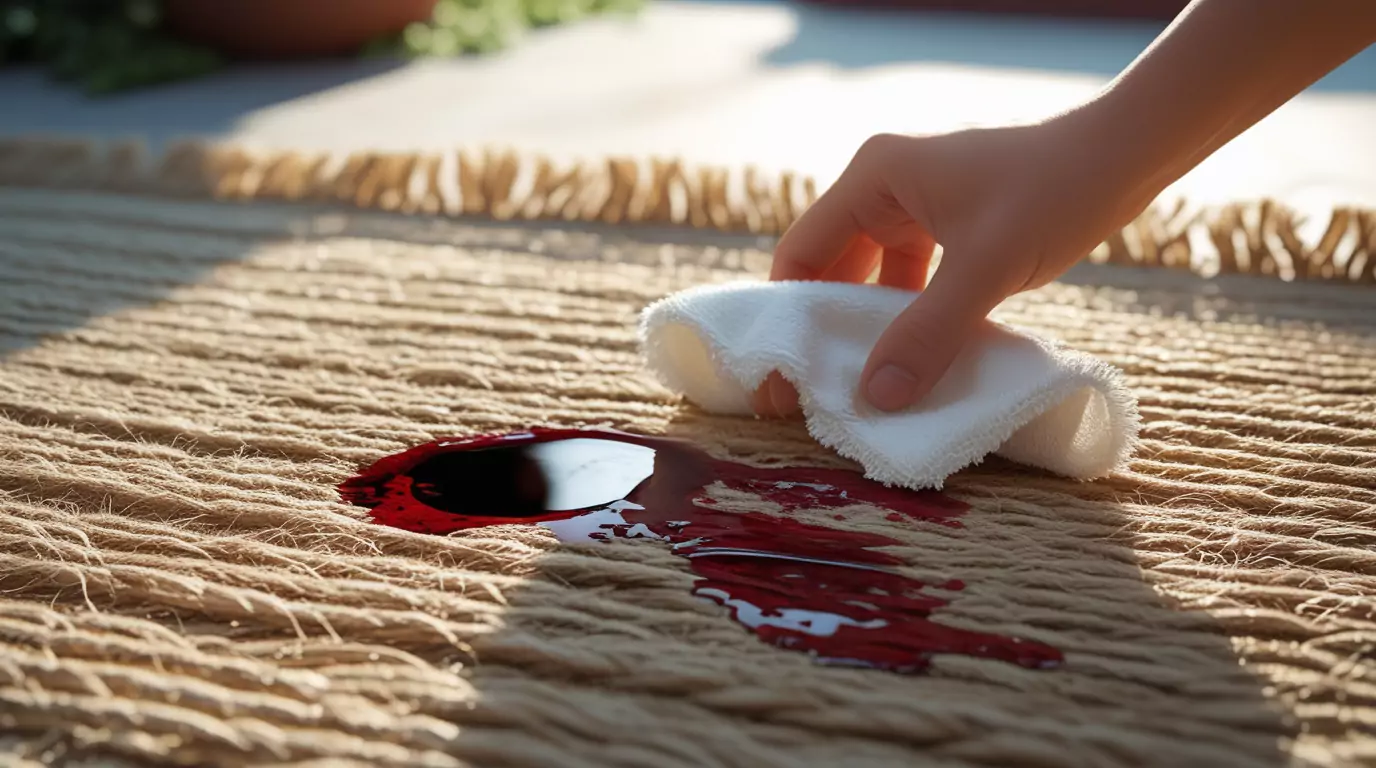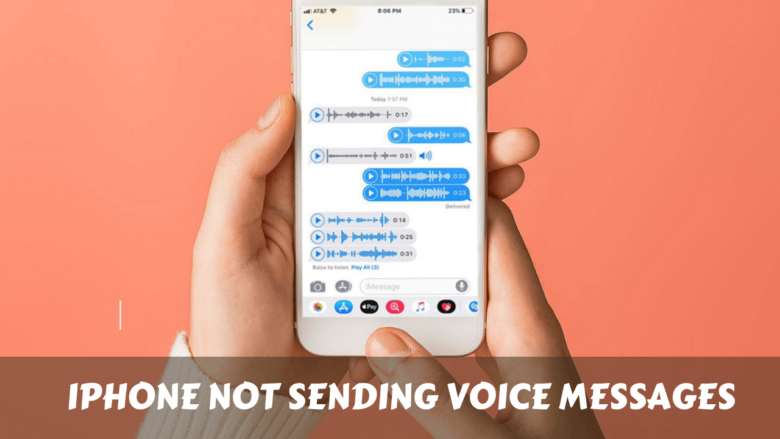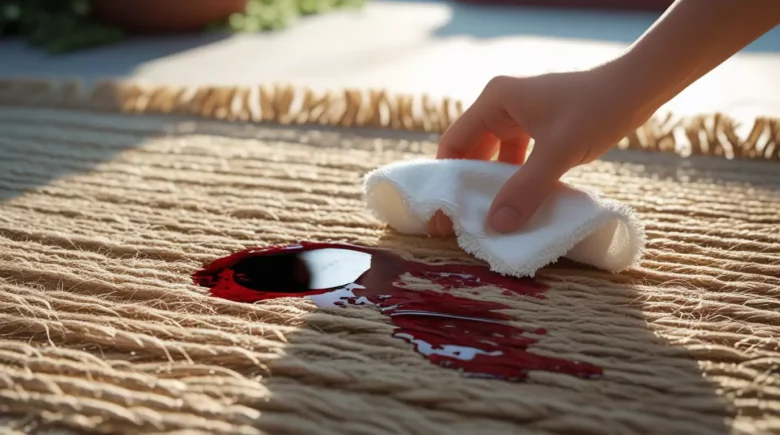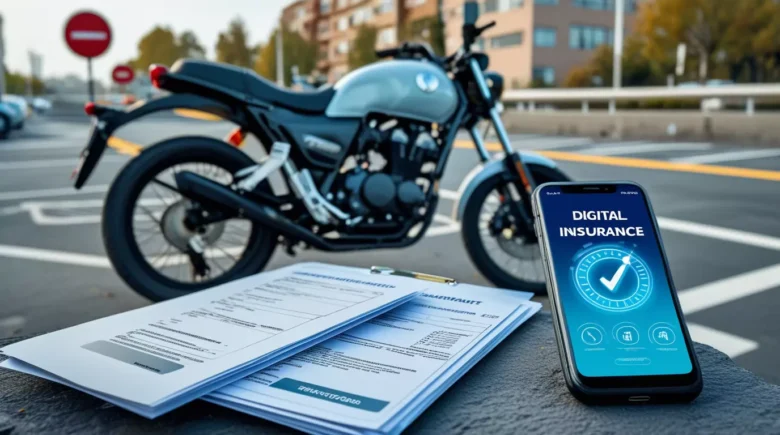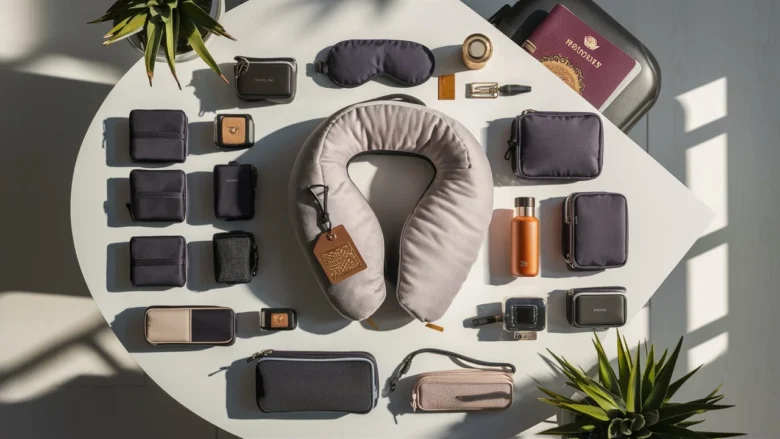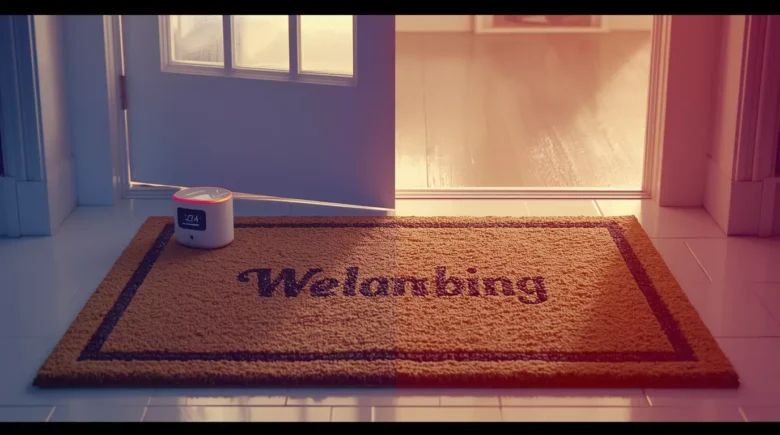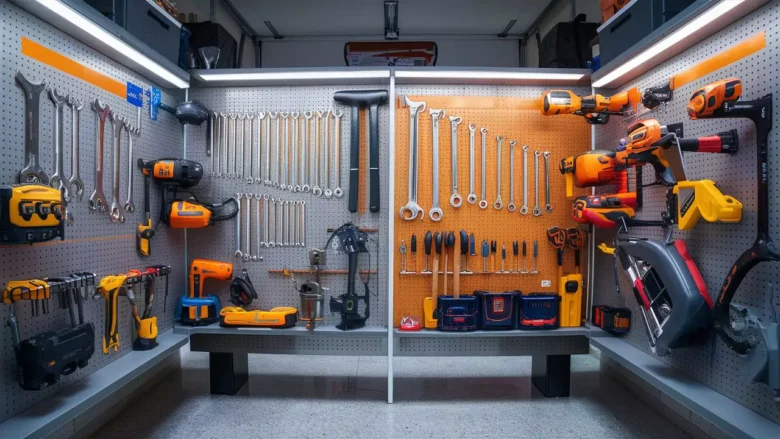Wireless soil moisture meters provide precise, real-time readings ideal for tech-savvy gardeners managing multiple plants, while the traditional finger test offers quick, free assessments perfect for experienced gardeners with small collections. Meters win for accuracy and consistency, but finger tests remain valuable for immediate checks. Your choice depends on garden size, plant variety, and desired precision level.
- The Watering Dilemma Every Gardener Faces
- Head-to-Head Comparison: Wireless Meter vs Finger Test
- 💖 You Might Also Like
- What Is a Wireless Soil Moisture Meter & How Does It Work?
- How the Technology Works
- Why Gardeners Are Making the Switch
- What Is the Finger Test & Why Gardeners Still Use It?
- How to Perform the Finger Test Correctly
- Why This Method Persists
- The Limitations You Should Know
- Wireless Soil Moisture Meter – Pros & Cons
- Pros: Why Modern Gardeners Choose Meters
- Cons: The Trade-Offs to Consider
- ✨ More Stories for You
- Finger Test – Pros & Cons
- Pros: Why This Method Still Works
- Cons: The Accuracy Challenges
- Wireless Soil Moisture Meter vs Finger Test – Which Works Best?
- When Wireless Meters Are the Clear Winner
- When the Finger Test Holds Its Ground
- The Hybrid Approach Many Gardeners Adopt
- When You Should Use a Wireless Soil Moisture Meter
- You’re Managing Multiple Plants with Different Needs
- Your Schedule Is Unpredictable
- You’re New to Gardening
- You’ve Struggled with Overwatering or Root Rot
- You’re Growing High-Value or Rare Plants
- Your Containers Are Deep or Large
- You Want to Optimize Plant Growth
- 🌟 Don't Miss These Posts
- When the Finger Test Is Enough
- You Have a Small Plant Collection
- You’re an Experienced Gardener
- You’re Growing Hardy Outdoor Plants
- Budget Is Your Primary Concern
- You Want Immediate, No-Device Feedback
- You’re Growing Plants in Accessible Locations
- You’re Testing Primarily Surface-Rooted Plants
- You Want to Build Soil Literacy
- Frequently Asked Questions (FAQs)
- Is a wireless soil moisture meter accurate?
- Is the finger test reliable for watering plants?
- Do moisture meters work for all soil types?
- How often should I test soil moisture?
- Can I leave a wireless moisture meter in soil permanently?
- What moisture level is best for most houseplants?
- Do expensive moisture meters work better than cheap ones?
- Can moisture meters prevent overwatering?
- How deep should I insert a moisture meter probe?
- Are wireless moisture meters worth the investment?
- How to Use a Wireless Soil Moisture Meter Properly
- How to Do the Finger Test Correctly
The Watering Dilemma Every Gardener Faces
Sarah checked her fiddle leaf fig every morning, pressing her finger into the soil like clockwork. Some days it felt dry, so she watered. Other days, unsure, she watered anyway “just to be safe.” Three months later, her once-thriving plant showed yellowing leaves and root rot from overwatering—a $60 plant lost to guesswork.
Sound familiar?
Watering is the most common gardening challenge, yet it’s surprisingly difficult to get right. Too much water suffocates roots and invites disease. Too little causes wilting, stunted growth, and plant stress. The difference between thriving and dying plants often comes down to knowing exactly when they need water.
Enter two completely different approaches: the wireless soil moisture meter—a modern, sensor-based tool that gives you precise digital readings—and the traditional finger test, the time-honored method your grandmother probably used. Both promise to solve your watering woes, but which actually delivers?
This comprehensive comparison breaks down accuracy, ease of use, cost, and real-world performance to help you choose the right method for your gardening style. Whether you’re managing a balcony herb garden or a sprawling outdoor landscape, choosing the wrong approach can mean the difference between flourishing greenery and constant plant replacements.
Before we dive in, here are today’s best deals on Wireless Soil Moisture Meters — updated live on Amazon. Check current prices and top-rated models right here: Shop Wireless Soil Moisture Meters on Amazon
Head-to-Head Comparison: Wireless Meter vs Finger Test
| Feature | Wireless Soil Moisture Meter | Finger Test |
|---|---|---|
| Accuracy | Highly accurate (measures moisture at root level with sensors) | Moderate (depends on experience and soil depth) |
| Ease of Use | Simple—insert probe and read display | Very simple—insert finger 2–3 inches deep |
| Price | $15–$60 depending on features | Completely free |
| Maintenance | Requires battery changes, occasional cleaning | None |
| Learning Curve | Minimal—instant readings | Requires experience to interpret correctly |
| Best For | Multiple plants, indoor gardens, precision watering, busy schedules | Small gardens, experienced gardeners, quick outdoor checks |
| Data Tracking | Many models offer app connectivity and historical data | No tracking—relies on memory |
| Consistency | Consistent readings regardless of user | Varies by person and conditions |
| Pros | ✅ Precise measurements ✅ Works in all soil types ✅ Tracks moisture trends ✅ Reduces guesswork | ✅ Instant feedback ✅ No equipment needed ✅ Works anywhere ✅ Builds soil knowledge |
| Cons | ❌ Requires purchase ❌ Needs battery maintenance ❌ Can malfunction | ❌ Less accurate in deep pots ❌ Messy hands ❌ Difficult for beginners |
Want a more accurate reading without the guesswork? Check today’s wireless meter discounts and see which models gardeners are loving: View Best-Selling Moisture Meters
💖 You Might Also Like
What Is a Wireless Soil Moisture Meter & How Does It Work?
A wireless soil moisture meter is a sensor-based gardening tool that measures the exact amount of water present in your soil. Unlike traditional wired meters, wireless versions transmit data directly to your smartphone via Bluetooth or WiFi, giving you real-time moisture readings without physically checking each plant.
How the Technology Works
These devices use electrodes or probes that measure soil conductivity. Water conducts electricity differently than dry soil, so the sensor calculates moisture levels based on electrical resistance between the probes. Advanced models measure additional factors like soil temperature, light exposure, and even nutrient levels.
When you insert the probe into soil near a plant’s root zone, the meter instantly analyzes moisture content and displays results on a digital screen or mobile app. Many wireless models offer:
- Real-time monitoring with push notifications when plants need water
- Historical tracking showing moisture trends over days or weeks
- Multi-plant management with multiple sensors paired to one app
- Custom alerts based on specific plant species requirements
The wireless connectivity means you can monitor your garden from anywhere—checking moisture levels from your office or getting watering reminders while traveling.
Why Gardeners Are Making the Switch
Modern wireless meters eliminate the inconsistency of subjective testing methods. They provide objective, numerical data that takes the guesswork out of watering schedules, especially valuable for gardeners managing different plant species with varying water needs.
Ready to experience precision watering? Browse top-rated wireless soil moisture meters with real user reviews: Shop Smart Watering Tools on Amazon
Pro tip: If you’re investing in gardening technology, maximize your savings with credit card rewards. Compare cards offering cashback on home and garden purchases: Find the Best Rewards Credit Cards
What Is the Finger Test & Why Gardeners Still Use It?
The finger test is gardening’s oldest watering method—simple, immediate, and requiring zero equipment. You literally stick your finger into the soil to gauge moisture levels by feel. Despite modern technology, experienced gardeners swear by this tactile approach that’s been passed down through generations.
How to Perform the Finger Test Correctly
The technique is straightforward but requires proper execution:
- Insert your index finger into the soil up to the second knuckle (roughly 2-3 inches deep)
- Feel the soil texture around your finger—is it damp, moist, or bone dry?
- Assess moisture level: If soil sticks to your finger and feels cool, moisture is adequate; if it’s dusty and pulls away easily, it’s time to water
- Check multiple spots in larger containers for consistent readings
Why This Method Persists
Gardeners continue using the finger test because it provides instant feedback without batteries, apps, or equipment. It connects you physically with your plants and helps develop an intuitive understanding of soil behavior. Over time, experienced gardeners learn to distinguish between different moisture levels by texture, temperature, and how soil compresses around their finger.
The Limitations You Should Know
While free and convenient, the finger test has real drawbacks:
- Depth limitations: Your finger only reaches 2-3 inches, missing moisture levels deeper where roots actually feed
- Inconsistent readings: What feels “moist” to you might feel “wet” to another gardener
- Soil type confusion: Clay soil feels different from sandy or loamy soil at the same moisture level
- Surface deception: Top soil can be dry while deeper layers remain waterlogged, or vice versa
- Beginner struggles: New gardeners often misinterpret soil texture, leading to chronic overwatering or underwatering
If your finger test is giving inconsistent results or you’re tired of guessing, a wireless meter provides objective measurements every time. See what other gardeners recommend: Browse Top Moisture Meters
Wireless Soil Moisture Meter – Pros & Cons
Pros: Why Modern Gardeners Choose Meters
✅ Pinpoint Accuracy: Sensors measure precise moisture percentages rather than subjective “feels like” assessments, eliminating human error and guesswork.
✅ Root-Level Readings: Probes reach 4-8 inches deep where roots actually absorb water, giving you data that matters for plant health.
✅ Consistency Across Users: Whether you’re checking or your partner is checking, the meter provides the same objective reading every time.
✅ Perfect for Multiple Plants: Manage different species with varying needs—succulents, ferns, vegetables—without memorizing individual watering schedules.
✅ Historical Data Tracking: Wireless models log moisture trends, helping you understand seasonal patterns and adjust watering routines accordingly.
✅ Smart Notifications: Get alerts when specific plants need attention, preventing neglect during busy weeks or vacations.
✅ Works in All Soil Types: Accurate readings in clay, sand, loam, peat, and coco coir without texture confusion.
✅ Reduces Plant Loss: Catch overwatering and underwatering early before damage becomes irreversible, saving money on plant replacements.
✅ Educational Tool: Learn each plant’s actual water consumption patterns rather than following generic watering advice.
✅ Time-Saving: Check 10 plants in minutes through your app instead of manually testing each container.
Cons: The Trade-Offs to Consider
❌ Upfront Investment: Quality wireless meters cost $15-$60, though this often pays for itself by preventing plant deaths.
❌ Battery Dependency: Requires battery replacements every few months to a year depending on usage and model.
❌ Probe Maintenance: Sensors can corrode or give false readings if not cleaned periodically, especially in mineral-heavy soil.
❌ Technology Learning Curve: Setting up apps, calibrating sensors, and understanding readings takes initial effort.
❌ Potential Malfunction: Electronics can fail—dropped devices, water damage to displays, or connectivity issues may require replacement.
❌ Over-Reliance Risk: Some gardeners become dependent on meters and lose the ability to read visual plant stress cues.
❌ Not Instant: While fast, wireless meters still require inserting probes and waiting for readings versus immediate finger assessment.
Bottom line: Wireless meters excel at accuracy and consistency but require financial investment and basic maintenance. They’re ideal when precision matters more than simplicity.
✨ More Stories for You
Finger Test – Pros & Cons
Pros: Why This Method Still Works
✅ Zero Cost: Completely free method—no equipment to buy, no batteries to replace, no subscriptions needed.
✅ Instant Results: Get immediate moisture feedback the moment your finger enters soil without waiting for device readings or app loading.
✅ No Maintenance: Never worries about battery life, probe corrosion, calibration, or technological malfunctions.
✅ Works Anywhere: Perfect for checking plants in remote locations, outdoor gardens, or situations where carrying devices is impractical.
✅ Builds Gardening Intuition: Develops tactile understanding of soil moisture that deepens your connection with plants and improves overall gardening skills.
✅ Quick Outdoor Checks: Ideal for rapidly assessing multiple garden beds without repeatedly inserting and cleaning probes.
✅ No Learning Curve: Everyone already knows how to use their finger—no manuals, apps, or setup required.
Cons: The Accuracy Challenges
❌ Subjective Interpretation: What feels “damp enough” varies dramatically between people, leading to inconsistent watering decisions.
❌ Limited Depth: Fingers typically reach only 2-3 inches deep, missing crucial moisture information at root level in deeper containers.
❌ Beginner Confusion: New gardeners struggle to distinguish between “moist,” “wet,” and “damp,” often causing chronic overwatering.
❌ Soil Type Variables: Clay, sand, and loam feel completely different at identical moisture levels, making texture-based assessment unreliable.
❌ Surface Deception: Top layers can be misleadingly dry while lower soil remains waterlogged, or vice versa, leading to incorrect watering.
❌ Messy Hands: Repeated testing leaves soil under fingernails and requires frequent hand washing.
❌ No Data Tracking: Impossible to track moisture trends over time or compare patterns between plants.
❌ Weather Interference: Cold fingers in winter or sweaty fingers in summer can skew perception of soil temperature and moisture.
Bottom line: The finger test offers convenience and zero cost but sacrifices accuracy and consistency. It works best for experienced gardeners with small plant collections who’ve developed reliable soil-reading skills through years of practice.
Wireless Soil Moisture Meter vs Finger Test – Which Works Best?
Wireless soil moisture meters work best for gardeners prioritizing accuracy, managing multiple plants, or struggling with inconsistent watering. They provide objective, root-level moisture data that eliminates guesswork and prevents costly overwatering mistakes, making them ideal for indoor plant collections, mixed-species gardens, or anyone new to plant care.
That said, the “best” method genuinely depends on your gardening situation, experience level, and what you value most in a watering routine.
When Wireless Meters Are the Clear Winner
Precision-driven gardeners benefit enormously from meter technology. If you’re managing houseplants with varying water needs—say, a moisture-loving fern next to a drought-tolerant snake plant—a wireless meter prevents the dangerous one-size-fits-all watering approach that kills plants.
The root-level readings make the difference. Your finger stops at 2-3 inches, but roots extend much deeper. Meters reach 6-8 inches down where plants actually drink, catching waterlogged conditions before root rot develops or bone-dry zones your finger misses entirely.
For busy professionals, travelers, or anyone prone to forgetting plants, wireless meters with smartphone alerts act like a personal plant assistant. Get notifications when specific plants need attention rather than watering everything on an arbitrary schedule that may be too frequent for some plants and insufficient for others.
When the Finger Test Holds Its Ground
Experienced gardeners with small outdoor collections often find the finger test perfectly adequate. If you’re growing tomatoes, peppers, and herbs in raised beds, you probably don’t need sensor technology—your practiced touch combined with visual cues like leaf turgor and soil color provides sufficient information.
The finger test also excels for rapid outdoor checks. Walking through a vegetable garden and spot-checking dozens of plants takes seconds with your finger versus minutes of probe insertion, waiting, cleaning, and re-inserting. For this scenario, convenience trumps precision.
Budget-conscious beginners might start with the finger test to develop basic moisture assessment skills before investing in technology. Just be aware this approach has a steeper learning curve and higher risk of plant loss during the trial-and-error phase.
The Hybrid Approach Many Gardeners Adopt
Smart gardeners often use both methods strategically. They rely on wireless meters for their expensive indoor plants, challenging species, or main plant investments, while using the finger test for quick checks of hardy outdoor plants or rapid morning garden walk-throughs.
If accuracy is your priority and you want to stop killing plants through watering mistakes, see the latest wireless meter offers and read real user reviews: Shop Moisture Meters on Amazon
Looking to save on gardening purchases? Use a rewards credit card to earn cashback on all your plant and tool investments: Compare the Best Cashback Credit Cards
When You Should Use a Wireless Soil Moisture Meter
Certain gardening scenarios demand the precision and consistency only wireless meters provide. If you recognize yourself in these situations, investing in meter technology will likely save you money, time, and plant heartbreak.
You’re Managing Multiple Plants with Different Needs
Indoor plant collections featuring diverse species—tropical philodendrons, desert cacti, humidity-loving ferns, and moderate-water pothos—require individualized watering approaches. A wireless meter with multi-sensor capability lets you monitor each plant’s specific moisture level and water accordingly, preventing the common mistake of treating all plants the same.
Your Schedule Is Unpredictable
Busy professionals, frequent travelers, or anyone with inconsistent daily routines benefit enormously from automated moisture monitoring. Wireless meters with smartphone alerts notify you when specific plants need attention, so you’re not watering everything “just in case” before a business trip or skipping watering days because you’re unsure what needs it.
You’re New to Gardening
Beginners lack the experience to reliably interpret soil moisture by touch. A wireless meter provides objective data that accelerates your learning curve. Instead of killing plants while developing your “green thumb,” you get accurate readings from day one. Over time, you’ll notice patterns—”Oh, my monstera typically needs water when the meter reads 25%”—that build genuine horticultural knowledge.
You’ve Struggled with Overwatering or Root Rot
If you’ve lost plants to overwatering, soggy soil, or root rot, a moisture meter breaks the cycle. These problems happen when soil stays too wet too long, creating oxygen-deprived conditions where roots suffocate. Meters catch excess moisture early, before visible symptoms appear, allowing you to adjust watering frequency and save the plant.
You’re Growing High-Value or Rare Plants
Expensive collectors’ plants, rare specimens, or sentimental plants (grandmother’s Christmas cactus passed down through generations) deserve the protection meters provide. When a single plant costs $100+ or carries irreplaceable emotional value, the $30-50 meter investment is obvious insurance against watering mistakes.
Your Containers Are Deep or Large
The finger test fails in deep containers where roots extend 8-12 inches down. Large floor plants in 14-inch pots, raised planters, or garden beds benefit from probe-based measurement that reaches actual root zones rather than just surface conditions.
You Want to Optimize Plant Growth
Serious gardeners aiming for maximum plant performance use meters to dial in optimal moisture ranges. Instead of keeping plants “alive,” you keep them thriving in their ideal moisture sweet spot, resulting in faster growth, more blooms, better fruit production, and overall healthier specimens.
Ready to upgrade your plant care routine? Browse wireless moisture meters with features matching your needs: Find Your Perfect Moisture Meter
🌟 Don't Miss These Posts
When the Finger Test Is Enough
Despite modern technology’s advantages, traditional finger testing remains perfectly adequate—even superior—in specific gardening contexts. Save your money and keep it simple when these conditions apply.
You Have a Small Plant Collection
Managing 3-5 plants of similar types doesn’t require sophisticated monitoring. If you’re growing a few pothos or snake plants with comparable watering needs, your finger provides sufficient feedback without the overhead of equipment, apps, and battery maintenance.
You’re an Experienced Gardener
Veteran gardeners develop calibrated tactile perception through years of practice. If you’ve successfully grown plants for decades using touch and visual cues, wireless technology adds minimal value. Your accumulated knowledge—recognizing subtle leaf changes, understanding seasonal moisture variations, reading soil texture accurately—outperforms basic sensor data.
You’re Growing Hardy Outdoor Plants
Drought-tolerant perennials, established shrubs, native plants, and vegetable gardens with robust root systems tolerate moisture fluctuation well. These plants survive naturally variable rainfall, so precision watering isn’t critical. A quick finger check before supplemental watering is perfectly sufficient.
Budget Is Your Primary Concern
If you’re gardening on a tight budget—starting a first garden, growing plants from seeds, or managing a large number of low-cost plants—allocate limited funds toward soil, containers, and plants themselves rather than monitoring equipment. The finger test costs nothing and works adequately for learning basics.
You Want Immediate, No-Device Feedback
Sometimes you just want to quickly check if that plant by the window needs water without grabbing your phone, opening an app, waiting for Bluetooth connection, or inserting probes. The finger test provides instant tactile information in less time than it takes to locate your meter.
You’re Growing Plants in Accessible Locations
Outdoor raised beds, window boxes, patio containers, and garden plots at ground level allow easy access for finger testing. You can walk through, spot-check multiple plants in seconds, and water immediately if needed without the logistics of probe insertion, cleaning, and storage.
You’re Testing Primarily Surface-Rooted Plants
Shallow-rooted annuals, seedlings, microgreens, and herbs with root zones in the top 3-4 inches of soil work perfectly with finger-depth testing. Since roots occupy the same zone your finger reaches, you’re getting relevant moisture information without needing deeper probe measurements.
You Want to Build Soil Literacy
Some gardeners intentionally use the finger test as a learning tool to develop deeper horticultural understanding. Direct soil contact—feeling temperature, texture, compaction, and moisture—builds intuitive knowledge that makes you a better overall gardener beyond just watering decisions.
Bottom line: If your situation aligns with these scenarios, the finger test serves you well. Save the meter investment for when your garden complexity, plant value, or accuracy needs genuinely exceed what tactile testing provides.
Frequently Asked Questions (FAQs)
Is a wireless soil moisture meter accurate?
Yes, quality wireless soil moisture meters are highly accurate, typically measuring moisture content within 2-3% precision. They use electrical conductivity sensors that provide consistent, objective readings at root depth where plants actually absorb water. However, accuracy depends on proper calibration, probe cleanliness, and correct insertion depth. Cheap meters under $10 may give unreliable readings, while mid-range models ($20-60) from reputable brands offer research-grade accuracy suitable for home gardening.
Is the finger test reliable for watering plants?
The finger test is moderately reliable for experienced gardeners with small collections but less dependable for beginners. Accuracy depends heavily on soil type recognition, depth assessment, and subjective interpretation. It works best for surface-rooted plants in shallow containers where fingers reach actual root zones. Major limitations include inability to measure deep moisture, inconsistency between users, and difficulty distinguishing soil textures. While free and immediate, the finger test’s reliability increases dramatically with gardening experience.
Do moisture meters work for all soil types?
Yes, most modern moisture meters work across all common soil types including clay, sand, loam, peat-based mixes, and coco coir. However, readings may require interpretation adjustment based on soil composition—clay retains more water and reads higher than sandy soil at similar plant-available moisture. Quality meters account for these differences through calibration settings. Extremely dense, compacted clay or very rocky soil can make probe insertion difficult and potentially affect accuracy. Soilless mixes and hydroponic media work well with standard meters.
How often should I test soil moisture?
Testing frequency depends on plant type, season, and container size. Fast-growing vegetables and tropical houseplants in small pots during summer may need daily checks, while drought-tolerant succulents in large containers during winter may only require weekly testing. A practical schedule: check high-maintenance plants every 2-3 days, moderate-water plants twice weekly, and low-water plants weekly. Wireless meters with automatic monitoring eliminate manual checking by sending alerts when moisture drops below species-specific thresholds.
Can I leave a wireless moisture meter in soil permanently?
Some wireless meters are designed for permanent installation with weatherproof probes, while others are meant for spot-checking and removal. Check your specific model’s specifications—continuous-monitoring devices can stay inserted indefinitely and provide real-time tracking via smartphone apps. Standard meters should be removed after reading to prevent sensor corrosion, probe damage, and inaccurate future readings. Permanent installation works best for high-value plants requiring constant monitoring, while removable meters suit gardeners checking multiple plants.
What moisture level is best for most houseplants?
Most common houseplants thrive when soil moisture ranges between 40-60% saturation, which translates to “evenly moist but not soggy” in tactile terms. Tropical plants like philodendrons and ferns prefer the higher end (50-60%), while pothos and snake plants do well at 30-50%. Succulents and cacti prefer 15-30%. These percentages correspond to meter readings—a huge advantage over subjective finger assessment. Let soil dry to the lower threshold before watering rather than maintaining constant high moisture.
Do expensive moisture meters work better than cheap ones?
Generally yes—moisture meters follow a quality-price correlation. Budget meters under $10 often lack calibration, provide inconsistent readings, and fail within months. Mid-range meters ($20-50) from established brands offer reliable accuracy, better build quality, and useful features like multiple sensors or app connectivity. Premium meters ($50-100+) include advanced features like nutrient measurement, cloud data storage, and professional-grade precision. For most home gardeners, a $25-40 meter provides excellent value with sufficient accuracy and longevity.
Can moisture meters prevent overwatering?
Absolutely—preventing overwatering is one of moisture meters’ primary benefits. Overwatering kills more houseplants than any other factor, causing root rot, fungal issues, and oxygen-depleted soil. Meters provide objective data that stops “just to be safe” watering behavior. By measuring actual moisture at root level rather than surface conditions, meters catch waterlogged soil before plants show symptoms. This is especially valuable for clay soils or containers without drainage that mask excess water problems until damage is severe.
How deep should I insert a moisture meter probe?
Insert probes to at least two-thirds of the pot depth or 4-6 inches deep in containers and garden beds, positioning them near the root mass but avoiding direct root contact that could cause damage. For shallow containers (under 6 inches), insert to half the pot depth. The goal is measuring moisture where roots actively absorb water rather than surface conditions. Avoid inserting so deep you hit the container bottom, which can damage the probe tip. For large containers, take readings at multiple depths for comprehensive assessment.
Are wireless moisture meters worth the investment?
For gardeners managing 5+ plants, species with specific water requirements, expensive specimens, or anyone struggling with watering consistency, wireless moisture meters absolutely justify their $20-60 cost. They typically pay for themselves by preventing a single plant death. The time saved, accuracy gained, and peace of mind from automated monitoring adds significant value. However, experienced gardeners with small collections of hardy plants may find them unnecessary. Consider your plant investment value, available time, and how much guesswork causes you stress.
How to Use a Wireless Soil Moisture Meter Properly
Getting accurate readings from your wireless moisture meter requires proper technique. Follow these steps to ensure reliable data:
Step 1: Calibrate Your Meter Before first use, calibrate the meter according to manufacturer instructions. This typically involves testing in bone-dry soil, then in water-saturated soil to establish the measurement range. Some advanced models auto-calibrate, while others require manual adjustment. Recalibrate every 3-6 months for continued accuracy.
Step 2: Choose the Right Insertion Location Insert the probe midway between the plant stem and container edge, avoiding the center where roots are densest. For large containers, take readings at 2-3 different spots to identify moisture gradients. Position the probe angled toward the root ball rather than straight down for more relevant readings.
Step 3: Insert to the Correct Depth Push the probe gently into soil to at least two-thirds of container depth or 4-6 inches for garden beds. Avoid forcing through dense soil, which can bend probes or damage sensors. If you hit resistance, remove and try a different spot rather than pushing hard. The probe should reach the active root zone where moisture matters most.
Step 4: Wait for a Stable Reading After insertion, wait 30-60 seconds for the meter to stabilize before reading. Immediate readings can be inaccurate as sensors equilibrate with surrounding soil conditions. Wireless models will display the reading on your smartphone once measurement is complete. Some advanced meters provide readings continuously when left in soil.
Step 5: Record and Track Results Note the reading along with date and plant location. Many wireless meters automatically log data in their apps, creating moisture history charts that reveal watering patterns and seasonal changes. Use this information to adjust watering frequency—if readings rarely drop below 60%, you’re watering too often.
Step 6: Clean the Probe After Use Wipe probes with a damp cloth after each use to remove soil particles that can interfere with sensor accuracy. For stubborn residue, use a soft brush. Never use harsh chemicals that might damage sensors. Dry the probe completely before storing to prevent corrosion.
Step 7: Replace Batteries as Needed Monitor battery indicators and replace batteries promptly when low. Weak batteries can cause inaccurate readings. Most wireless meters use standard AAA or button-cell batteries lasting 3-12 months depending on usage frequency and model power consumption.
How to Do the Finger Test Correctly
While simple in concept, the finger test requires proper technique for reliable results. Here’s how to perform it accurately:
Step 1: Choose the Right Finger Depth Insert your index finger into soil to the second knuckle, approximately 2-3 inches deep. This depth bypasses misleading surface dryness while remaining within finger reach. For shallow containers under 6 inches, insert to halfway down. Your fingertip should be in the zone where smaller roots absorb water.
Step 2: Feel Soil Texture and Temperature Pay attention to multiple factors: Does soil feel cool (indicating moisture) or warm (suggesting dryness)? Does it stick to your finger or fall away easily? Can you compress it into a ball, or does it crumble apart? Cool, sticky soil that holds together indicates adequate moisture. Warm, loose soil suggests watering time.
Step 3: Test Multiple Container Spots Don’t trust a single insertion point. Check near the container edge where water drains fastest and near the center where moisture collects. For large pots, test 3-4 different locations. Moisture often varies significantly across a single container, especially after uneven watering or if roots have created channels.
Step 4: Consider Soil Type Clay soil feels sticky and moldable even when relatively dry, while sandy soil feels gritty and falls apart even when moist. Peat-based potting mixes feel spongy and spring back when squeezed. Learn your specific soil’s texture at different moisture levels—water a plant, then check immediately; test again the next day; test when the plant looks thirsty. This builds calibrated touch recognition.
Step 5: Combine with Visual Plant Cues Use the finger test alongside observation—do leaves look perky or droopy? Is foliage vibrant or dull? Are stems firm or soft? Combining tactile soil assessment with visual plant health creates more reliable watering decisions than either method alone. Plants tell you what they need if you learn their language.
Step 6: Wash Hands Between Plants Clean fingers between different containers to avoid transferring pathogens, especially if any plants show signs of disease. Contaminated fingers can spread fungal spores or bacterial infections throughout your collection. This simple hygiene step prevents inadvertently creating a plant health crisis.
Step 7: Develop Consistent Technique Check plants at the same time of day using the same finger insertion angle and depth. Consistency builds reliable baseline understanding. Morning checks show overnight moisture retention; evening checks reveal daily water use. Pick one routine and stick with it for comparable results over time.


